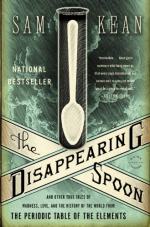|
This section contains 732 words (approx. 2 pages at 400 words per page) |

|
Summary
Chapter 6: In the early 20th century, Henry Moseley contributed significant work that allowed scientists to fill many of the holes in the periodic table and resolve some questions about how it should be organized. In the 1930s and 1940s, scientists began to focus on radioactivity and nuclear science, including fission and nuclear chain reactions. As science developed, those working on the Manhattan Project developed a new scientific method called the Monte Carlo method. It was a departure from theoretical and experimental science that focused instead on computational calculations and probability. This method was central to the development of nuclear weapons and computers. Kean then writes about the chemistry of atomic bombs, including why they are so destructive and deadly.
Chapter 7: After World War Two, many scientists in Europe and the United States were focused on discovering new elements, in particular the...
(read more from the Part II: Chapters 6-7 Summary)
|
This section contains 732 words (approx. 2 pages at 400 words per page) |

|




